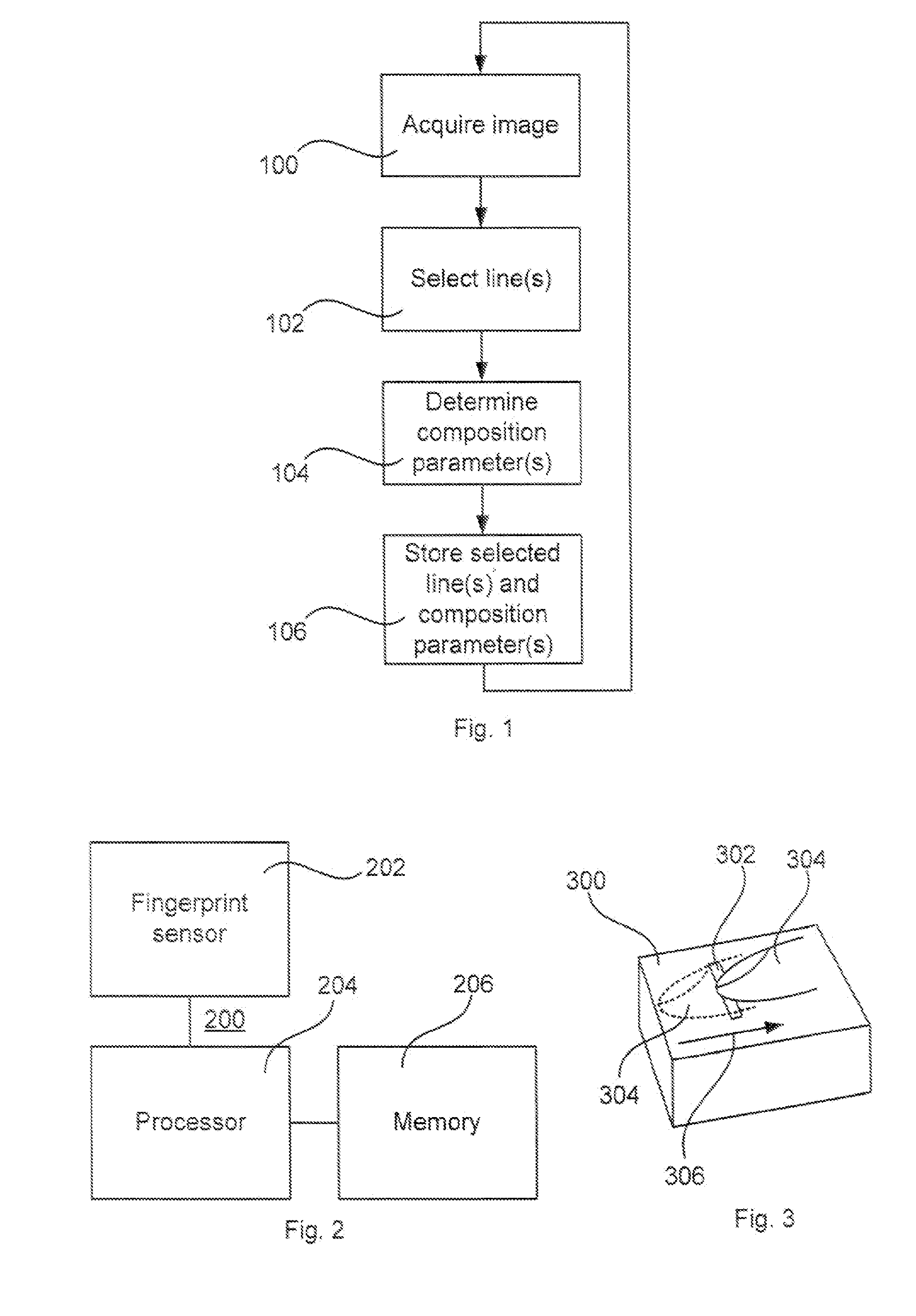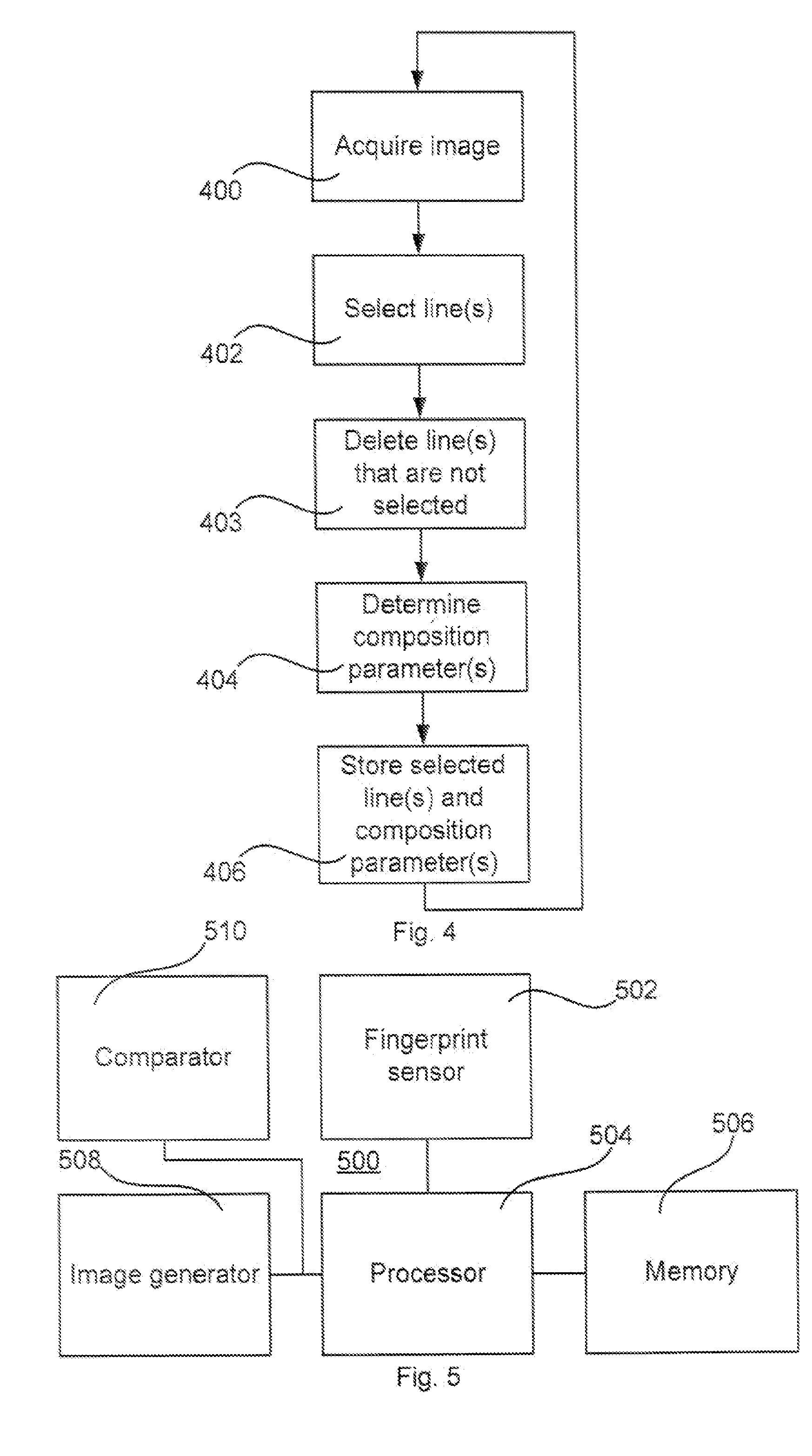Sequential image alignment
a technology of image alignment and square image, applied in the field of methods, can solve the problems of unwieldy design of optical sensors and relatively expensive capacitive silicon sensors
- Summary
- Abstract
- Description
- Claims
- Application Information
AI Technical Summary
Benefits of technology
Problems solved by technology
Method used
Image
Examples
Embodiment Construction
[0055]FIG. 1 is a flow chart illustrating a method according to an embodiment of the present invention. An image of a fingerprint is acquired in an image acquireing step 100. The image is acquired upon a relative movement between an image sensor and the finger to be imaged, e.g. by sweeping the finger over the sensor, while several images are acquired in sequence.
[0056]The sensor is preferably a swipe sensor, which has an elongated sensor area to which the relative movement of the finger is performed in a direction perpendicular to the elongation of the sensor. Normally, the width of the sensor is about the width of a normal fingertip, while the size of the sensor in the movement direction only is one or a few millimeters. Thereby, each acquired image comprises a part of the fingerprint.
[0057]Depending on the relative movement, the overlap between the sequentially acquired images may differ, and depending on direction and straightness of the relative movement, the alignment between ...
PUM
 Login to View More
Login to View More Abstract
Description
Claims
Application Information
 Login to View More
Login to View More - R&D
- Intellectual Property
- Life Sciences
- Materials
- Tech Scout
- Unparalleled Data Quality
- Higher Quality Content
- 60% Fewer Hallucinations
Browse by: Latest US Patents, China's latest patents, Technical Efficacy Thesaurus, Application Domain, Technology Topic, Popular Technical Reports.
© 2025 PatSnap. All rights reserved.Legal|Privacy policy|Modern Slavery Act Transparency Statement|Sitemap|About US| Contact US: help@patsnap.com



